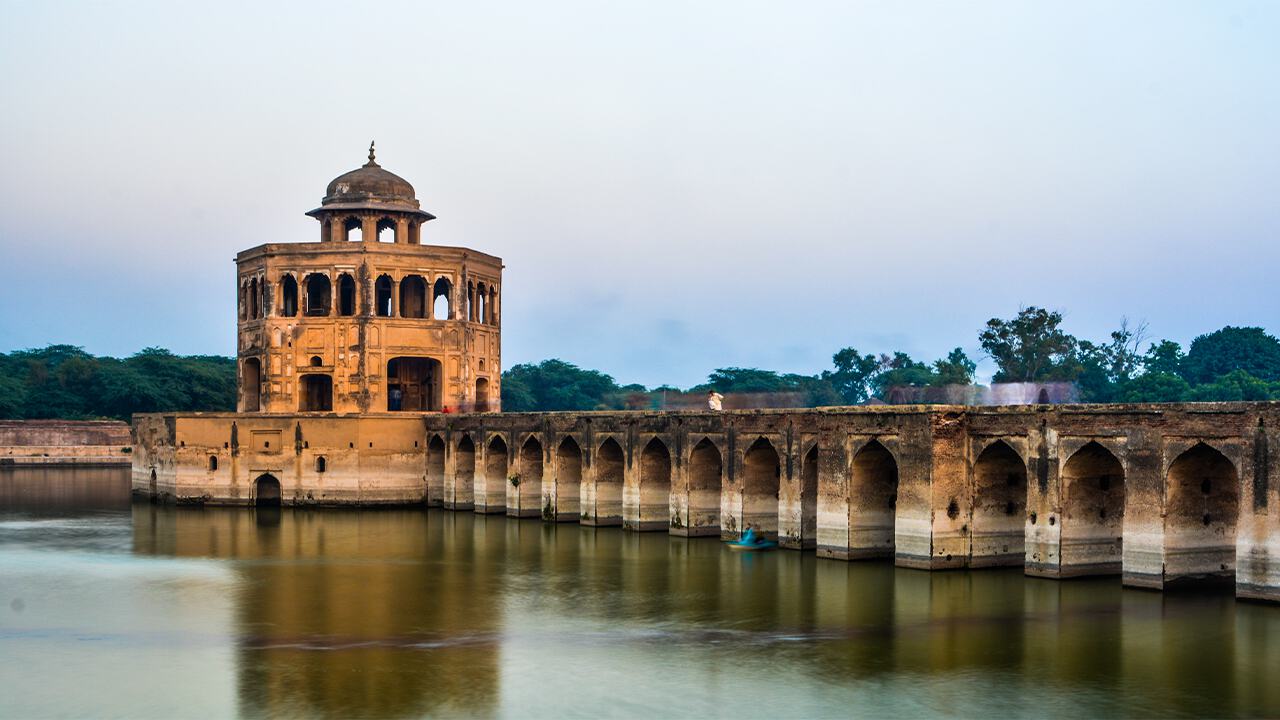Pakistan, a country formed only 75 years ago, is a treasure trove of ancient civilisations and historical landmarks. Home to some of the oldest urban centres in the world, Pakistan boasts centuries-old fortresses and intricately crafted mosques steeped in history.
For enthusiasts of historical exploration, Pakistan offers numerous UNESCO World Heritage Sites that are worth visit. Here’s a curated list of Historical Places in Pakistan that showcase its rich cultural heritage:
Hiran Minar
Historical Significance
Hiran Minar, located in Sheikhupura, Pakistan, is a fascinating historical complex dating back to the 17th-century Mughal era. Known as “The Deer Tower,” it was commissioned by Emperor Jahangir in remembrance of his beloved pet antelope, Mansraj. Situated approximately 40 kilometres northwest of Lahore, Hiran Minar stands as a testament to Jahangir’s affection for nature and his fondness for unique architectural endeavours.
Architectural Features
Dominating the landscape are four 30-foot-high minarets that command attention with their elegant design. Central to the site is a large, rectangular pool, complemented by an octagonal pavilion that enhances the serene ambience of the surroundings.
Surrounded by a scrub forest, Hiran Minar offers visitors not only historical intrigue but also a natural retreat from urban life. The tranquil setting, with its juxtaposition of water and land, provides a picturesque backdrop for exploring Mughal-era craftsmanship and design. Additionally, the minaret where Mansraj, the antelope, was buried adds an emotional touch to the site’s historical narrative.
Accessibility
Accessible via the M2 Motorway from Lahore, it is a popular destination for both locals and tourists seeking to immerse themselves in Pakistan’s rich cultural heritage. Open from 8 AM to 8 PM daily and with no entrance fee, offering an easy day trip for visitors.

The Noor Mehal
Historical Significance
Noor Mahal, also known as Noor Palace, stands as a testament to the architectural grandeur of Bahawalpur, Pakistan. The palace was built in 1872 by Nawab Sadiq Muhammad Khan IV, reflecting a blend of European and Islamic architectural styles and embodying elegance and historical significance.
Architectural Features
Noor Mahal covers an impressive area of 44,600 square feet. It boasts 32 rooms, including a unique basement with 14 rooms, six decorative verandas, and five domes that add to its majestic appearance. The design showcases Corinthian influences alongside Islamic motifs, creating a distinctive visual appeal. The palace interior is adorned with imported furniture from England and Italy, enhancing its regal ambience.
The construction of Noor Mahal was a magnificent affair, completed at a cost of Rs. 1.2 million during its time. Originally, it was planned as a dwelling for Nawab Sadiq’s wife. Still, she reportedly spent only one night there due to the proximity of Basti Maluk Shah’s graveyard, which led her never to return. Today, it remains under the care of the Pakistani Army and is open to the public as a cherished historical site.
Accessibility
Declared a protected monument by the Government of Pakistan in 2001, the Noor Mahal continues to captivate with its rich history and architectural splendor. Located in Bahawalpur, a city steeped in history during the British Raj era, visitors can explore the personal belongings of the Nawab, including old swords, currency, and a piano that once resonated within its walls.
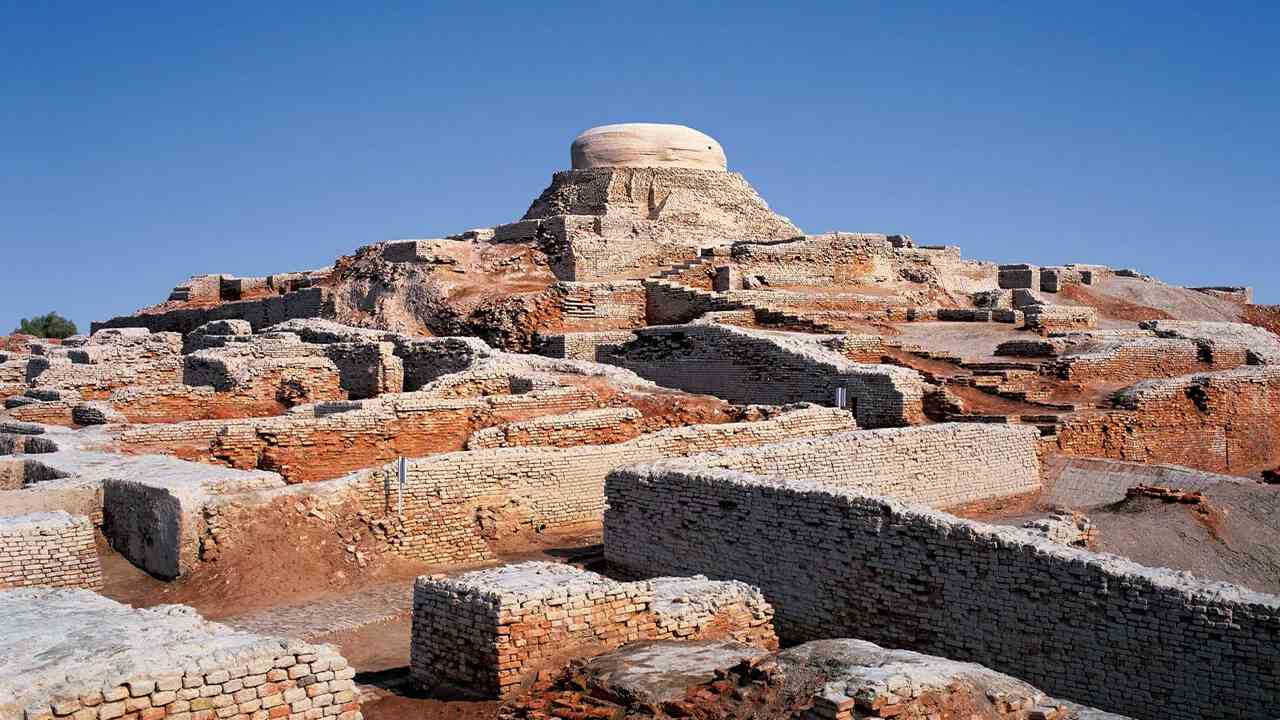
Mohenjo Daro
Historical Significance
Mohenjo-Daro, meaning “Mound of the Dead Men” in Sindhi, stands as a pivotal archaeological site in Pakistan’s Sindh province. It offers a glimpse into one of the earliest and largest urban civilisations of the ancient world, the Indus Valley Civilization. Built around 2500 BCE, it remained undiscovered for over 3700 years until its excavation in the 1920s.
Architectural Features
Mohenjo-Daro was designated a UNESCO World Heritage Site in 1980. Spanning an area of over 300 hectares, it showcases advanced urban planning with a grid-like street layout dividing the city into two main sections: The Castle and the Lower City. This structured arrangement, along with a sophisticated drainage system featuring well-engineered channels, reflects the high level of civic management of its time.
Excavations at Mohenjo-Daro have unearthed artefacts, including figurines, jewellery, seals, and pottery. Among the most notable discoveries are seals engraved with yet undeciphered scripts, providing interesting clues about the civilisation’s written language and symbolic communication.
Accessibility
Located on the western bank of the Indus River in the Larkana district, visitors can explore remnants of public buildings, assembly halls, and private homes, offering insights into the daily life and societal structure of its inhabitants. This archaeological marvel not only contributes to our understanding of early urban civilisations but also serves as a testament to human ingenuity.

Minare Pakistan
Historical Significance
Minar-e-Pakistan stands prominently in Lahore, Pakistan, symbolising the nation’s pride and patriotism. Situated in the heart of the city, it memorialises a significant event in Pakistan’s history—the Lahore Resolution of March 23, 1940, where the All-India Muslim League passed a resolution demanding a separate homeland for Muslims in South Asia.
Architectural Features
Designed by the renowned Russian architect Nasreddin Murat-Khan, construction of Minar-e-Pakistan began in 1960 and concluded in 1968, costing approximately Rs 7,058,000. The monument’s architecture blends Islamic and contemporary elements harmoniously, reflecting both cultural heritage and modern design principles.
The tower itself rises impressively to a height of 70 meters above ground level, with the main structure towering 62 meters high. At its base, the tower’s architecture transforms into large petals, reaching a height of 9 meters, creating a distinctive and visually striking profile. The tower’s diameter spans approximately 9.75 meters.
Inscriptions on the petals include the texts of the Lahore Resolution in English, Bengali, and Urdu, along with excerpts from the Delhi Resolution of April 9, 1946. These engravings serve as enduring reminders of the historic declarations that paved the way for Pakistan’s independence.
Accessibility
Located near the Badshahi Mosque and Lahore Fort, Minar-e-Pakistan attracts thousands of visitors annually.
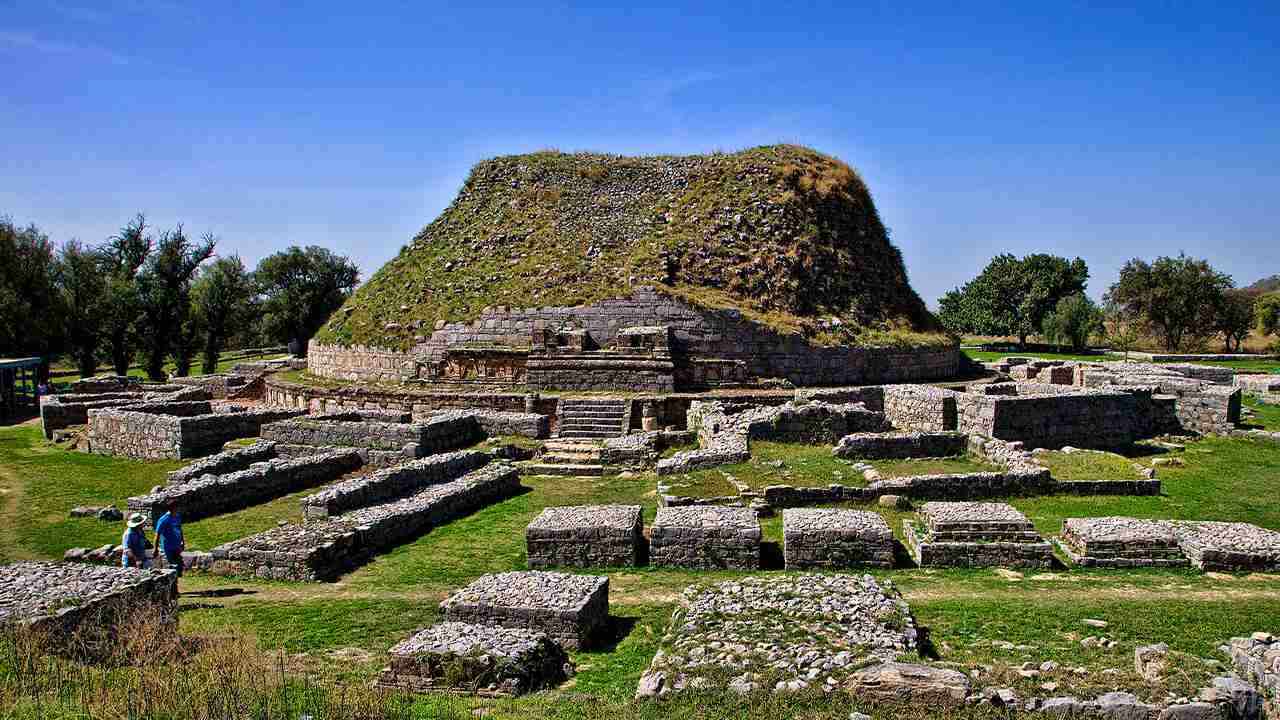
Taxila City
Historical Significance
Taxila, an ancient city located in the Punjab province of Pakistan, holds significant historical and cultural importance as a UNESCO World Heritage Site. Situated approximately 32 kilometres northwest of Islamabad and Rawalpindi along the Grand Trunk Road, Taxila is renowned for its role as a crossroads of civilisations.
Architectural Features
The origins of Taxila trace back to around 1000 BCE, with some ruins dating as far back as 3360 BCE. Over the centuries, it flourished under various empires, including the Kushan, Indo-Greek, Achaemenid, , Indo-Scythian, and Mauryan Empires. This diverse heritage blends Persian, Greek, and Indian influences.
At its peak, Taxila was a centre of commerce and learning, appealing traders and scholars across Asia. The ancient University of Taxila, though debated among scholars, is considered one of the oldest universities in the world. Its ruins, spread across a wide area, include monastic complexes, stupas, and the famous Dharmarajika Stupa and Jaulian Monastery.
Accessibility
Rediscovered in the 19th century by Sir Alexander Cunningham, visitors can explore its well-preserved archaeological sites now, which offer insights into ancient religious, academic, and cultural practices. The Taxila Museum houses artefacts excavated from the area, providing further context to the city’s rich history.
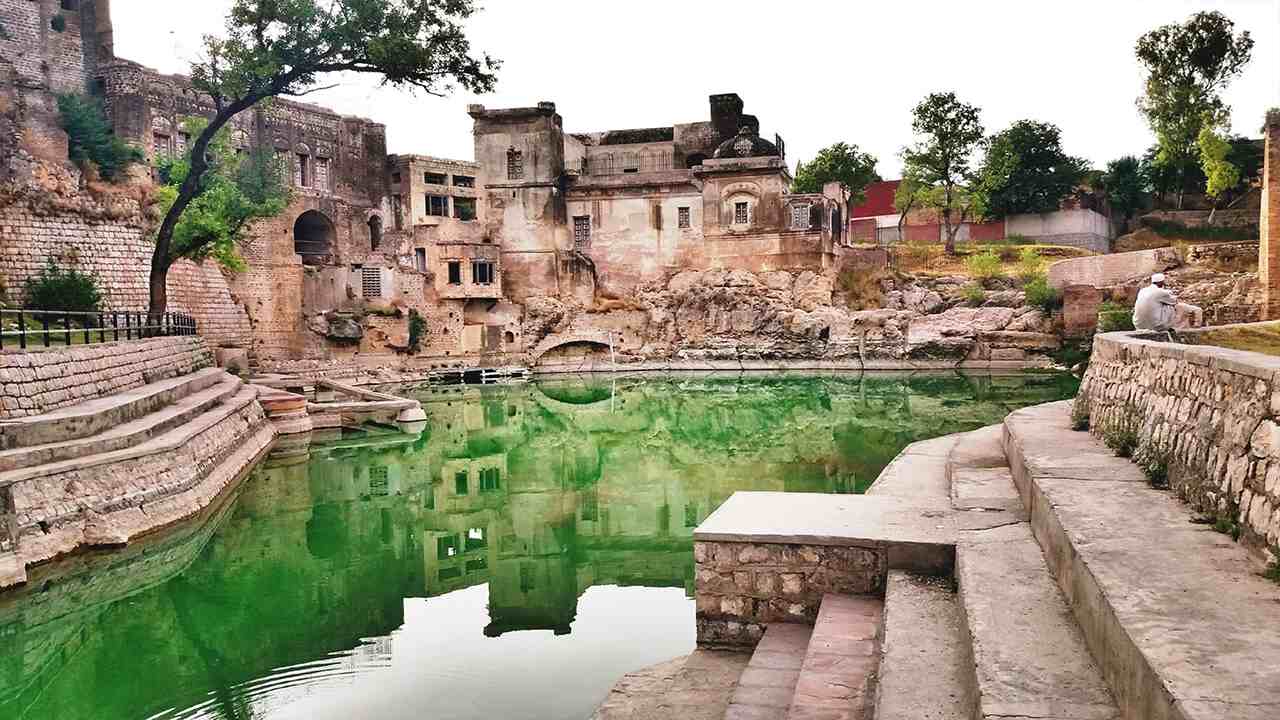
Katas Raj Temples
Historical Significance
Katas Raj Temples, located near Kallar Kahar in Punjab, Pakistan, constitute a complex of interconnected Hindu temples. Situated at an altitude of 2000 feet and approximately 100 kilometres from the Tilla Jogian complex, these temples are surrounded by a sacred pond known as Katas.
According to Hindu tradition, the pond at Katas Raj was formed from the tears of Lord Shiva, shed in grief over the loss of his wife, Sati. This legend adds to the spiritual importance of the site, making it a respected pilgrimage destination for Hindus. Another belief attributes the establishment of the temples to the Hindu deity Krishna, who is said to have installed a hand-made shilling within the complex.
Architectural Features
The temples themselves date back to the 7th century CE or possibly earlier, showcasing ancient architectural styles and religious practices. Over the centuries, the site has been mentioned in Hindu scriptures such as the Mahabharata and visited by prominent figures like Guru Nanak, the founder of Sikhism.
Accessibility
Access to Katas Raj Temples is convenient from major cities like Islamabad and Lahore, making it accessible for tourists interested in exploring ancient Hindu architecture and traditions. The site is open daily from 9 AM to 5 PM, and there is no entrance fee, allowing visitors to immerse themselves in the spiritual and historical allure of this sacred place.

Harappa
Historical Significance
Harappa, located approximately 24 kilometres west of Sahiwal in Punjab, Pakistan, is a significant archaeological site that offers insights into the ancient Indus Valley Civilization. Named after a nearby village on the banks of the Ravi River, Harappa dates back to around 3300 BCE, making it one of the oldest urban centres in the world.
Architectural Features
The ancient city of Harappa flourished between 2600 BCE and 1900 BCE, covering an area estimated to have housed 23,500 residents across 370 acres. This civilisation was remarkably advanced, featuring a sophisticated urban layout with planned streets and an elaborate drainage system. Harappa’s inhabitants were known for their trading prowess, exchanging cotton textiles and agricultural products with Mesopotamia.
Excavations at Harappa extracted various artefacts, including seals, figurines, and pottery. Today, visitors to Harappa can explore the archaeological remains that testify to its ancient glory. The Harappa Museum, nearby, houses a collection of artefacts excavated from the site, offering a deeper understanding of the civilisation’s material culture and historical significance.
Accessibility
Harappa’s enduring appeal lies in its role as a testament to Pakistan’s rich archaeological heritage and its contribution to the understanding of early urban societies. Open to visitors year-round with no entrance fee, Harappa invites exploration into the mysteries and achievements of one of the world’s earliest civilisations.
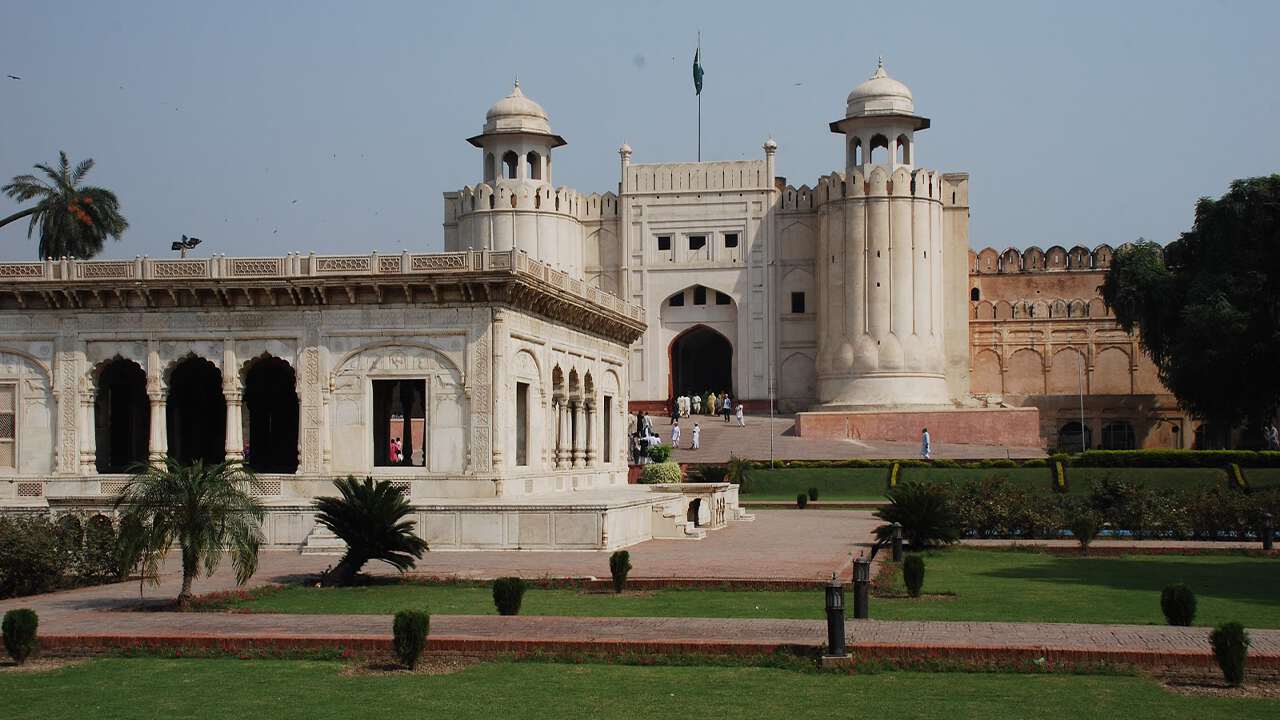
Lahore Fort
Historical Significance
Lahore Fort, also known as Shahi Qila or Royal Fort, showcases the grandeur and architectural brilliance of the Mughal Empire. Spanning over 20 hectares within the Walled City of Lahore, this UNESCO World Heritage Site boasts 21 notable monuments that trace its history back to the reign of Emperor Akbar.
Architectural Features
The origins of Lahore Fort are ancient, with initial construction believed to have begun in the 11th century. However, during the Mughal era, the fort saw significant expansion and fortification. Subsequent Mughal rulers such as Jahangir, Shah Jahan, and Aurangzeb further embellished the fort with marble palaces, intricate carvings, and impressive gateways like the Alamgiri Gate.
Visitors can explore its various structures, including the Naulakha Pavilion, Diwan-i-Khas, and the iconic Picture Wall, adorned with vibrant mosaics and frescoes. One of the most famous attractions within Lahore Fort is the Palace of Mirrors or Sheesh Mahal, made by Shah Jahan. The fort’s museum offers a glimpse into Mughal history, with galleries showcasing armour, Sikh artefacts, and Mughal leftovers.
Accessibility
Lahore Fort stands majestically in the heart of Lahore, Pakistan, offering a captivating blend of Indo-Islamic and Mughal architectural styles. With its fascinating history, t remains a must-visit destination for history enthusiasts and travellers alike.

Takht-I-Bahi
Historical Significance
Takht-i-Bahi, meaning “Throne of Spring Water,” is an ancient Buddhist monastery nestled in Mardan, Khyber Pakhtunkhwa, Pakistan. This historical place is renowned for its well-preserved Indo-Parthian architecture. This UNESCO World Heritage Site dates back to the 1st century CE and served as a centre of Buddhist worship and learning until the 7th century.
Architectural Features
Situated atop a hill 500 feet above the village of the same name, Takht-i-Bahi comprises four distinct sections. The Stupa Court, the first section, features a cluster of stupas arranged in a central courtyard, symbolising the focal point of religious ceremonies. The second section includes monastic chambers, assembly halls, and dining areas, providing insights into the communal life of Buddhist monks.
Additionally, the temple complex within Takht-i-Bahi mirrors the Stupa Court with its array of stupas, emphasising their significance in Buddhist rituals and practices. Lastly, the Tantric monastic complex consists of small, dimly lit cells with low entrances, possibly used for specialised forms of meditation.
Accessibility
Discovered and documented by a French officer in 1836, Takht-i-Bahi’s archaeological significance was formally recognised with systematic excavations beginning in 1864. Today, the site is easily accessible via a paved road and features designated parking areas, attracting visitors keen to explore its historical artefacts and architectural splendour.
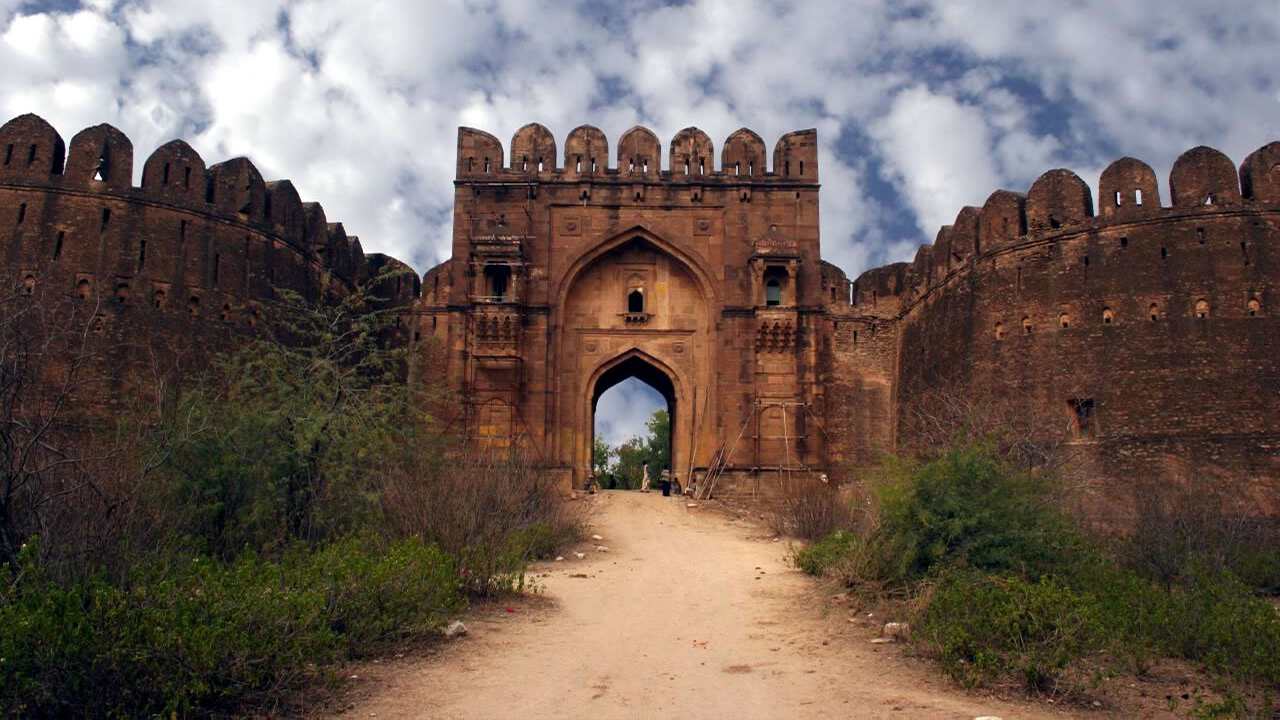
Rohtas Fort
Historical Significance
Rohtas Fort, also known as Qila Rohtas, stands proudly near the city of Jhelum in Punjab, Pakistan. It serves as a testament to the strategic foresight of Sher Shah Suri, who initiated its construction in the 16th century. This fortress spans an impressive 70 hectares, encompassed by a 4-kilometre-long fortified wall adorned with 68 stronghold towers and 12 grand gateways. Its location was strategically chosen to command the famous GT Road, a vital trade and military route of its time, and to prevent the return of the Mughal emperor Humayun.
Architectural Features
Designated as a UNESCO World Heritage Site in 1997, Rohtas Fort showcases exceptional Muslim military architecture from Central and South Asia. Its architectural style is a fusion of Afghan and Indian influences, featuring massive stone walls and intricately designed gates. Despite never facing direct attack, the fort’s enduring structure symbolises resilience and serves as a significant historical attraction.
Visitors to Rohtas Fort can explore various sections, such as the Haveli of Maan Singh and the Sohail Gate, each offering insights into the region’s turbulent past. The fort remains a popular destination for history enthusiasts, offering a glimpse into Pakistan’s rich cultural heritage.
Accessibility
Located approximately 15 kilometres from Jhelum, Rohtas Fort is easily accessible from Islamabad and Lahore. Open from 9 AM to 5 PM, entry to the fort is free, welcoming visitors to immerse themselves in centuries-old military architecture.
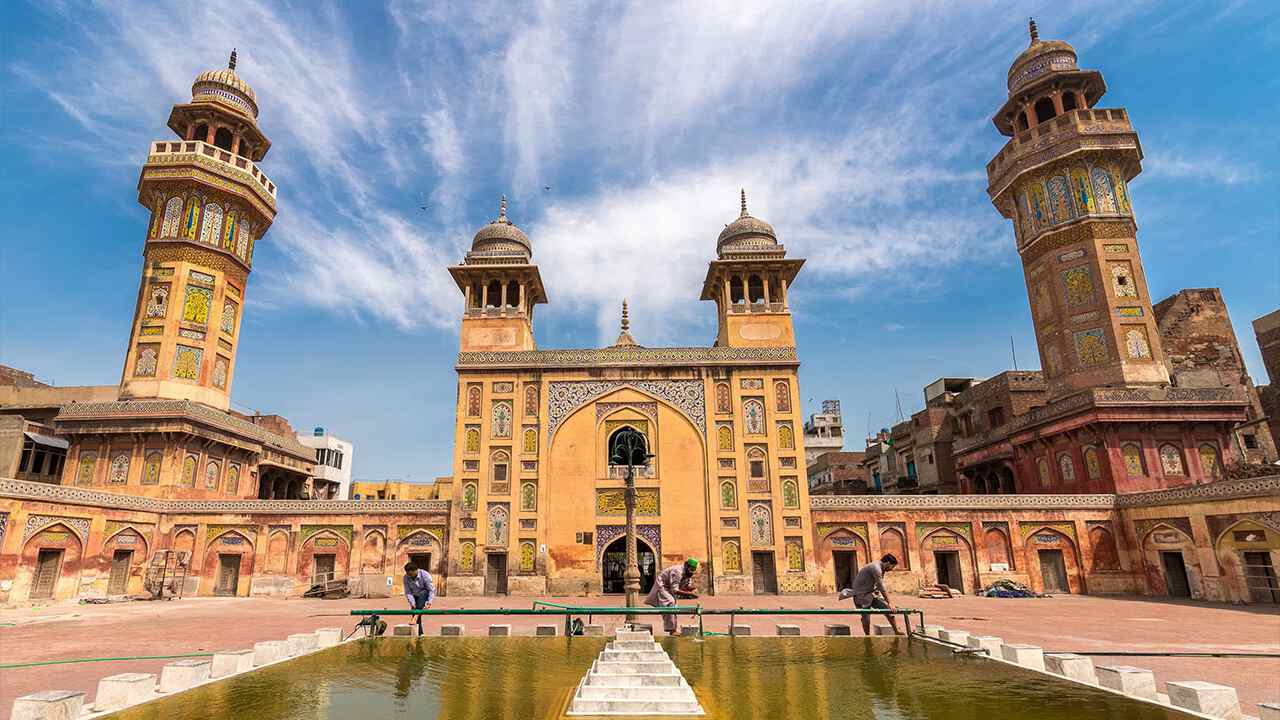
Wazir Khan Masjid
Historical Significance
The Wazir Khan Mosque, located in the heart of Lahore’s historic Walled City, stands as a masterpiece of Mughal architecture. Constructed by Sheikh Ilm-ud-Din Ansari, known as Wazir Khan, during the reign of Emperor Shah Jahan, its construction began in 1634 and was completed in 1641. The mosque is not only a place of worship but also a tribute to the rich cultural and artistic heritage of the Mughal period.
Architectural Features
This magnificent mosque is renowned for its intricate embellishments, particularly its vividly coloured mosaic tiles that adorn both its exterior and interior walls. These tiles are arranged in stunning geometric and floral patterns. Standing tall are four minarets, each approximately 33 meters high, and five elegant domes shaped like turnips, adding to the architectural splendour of the structure.
The Wazir Khan Mosque is historically significant for incorporating a unique feature—a bustling bazaar with 22 shops integrated into its original design. Moreover, the mosque houses the tomb of Sufi saint Sayed Muhammad Ishaq Gazroni, adding to its spiritual importance. Its inclusion on the tentative list of UNESCO World Heritage Sites underscores its global significance as a cultural treasure.
Accessibility
Accessed through the Delhi Gate in Old Lahore, the Wazir Khan Mosque continues to attract visitors from around the world who admire its architectural beauty and historical importance. It remains a vibrant symbol of Lahore’s rich heritage and the artistic brilliance of Mughal architecture.
